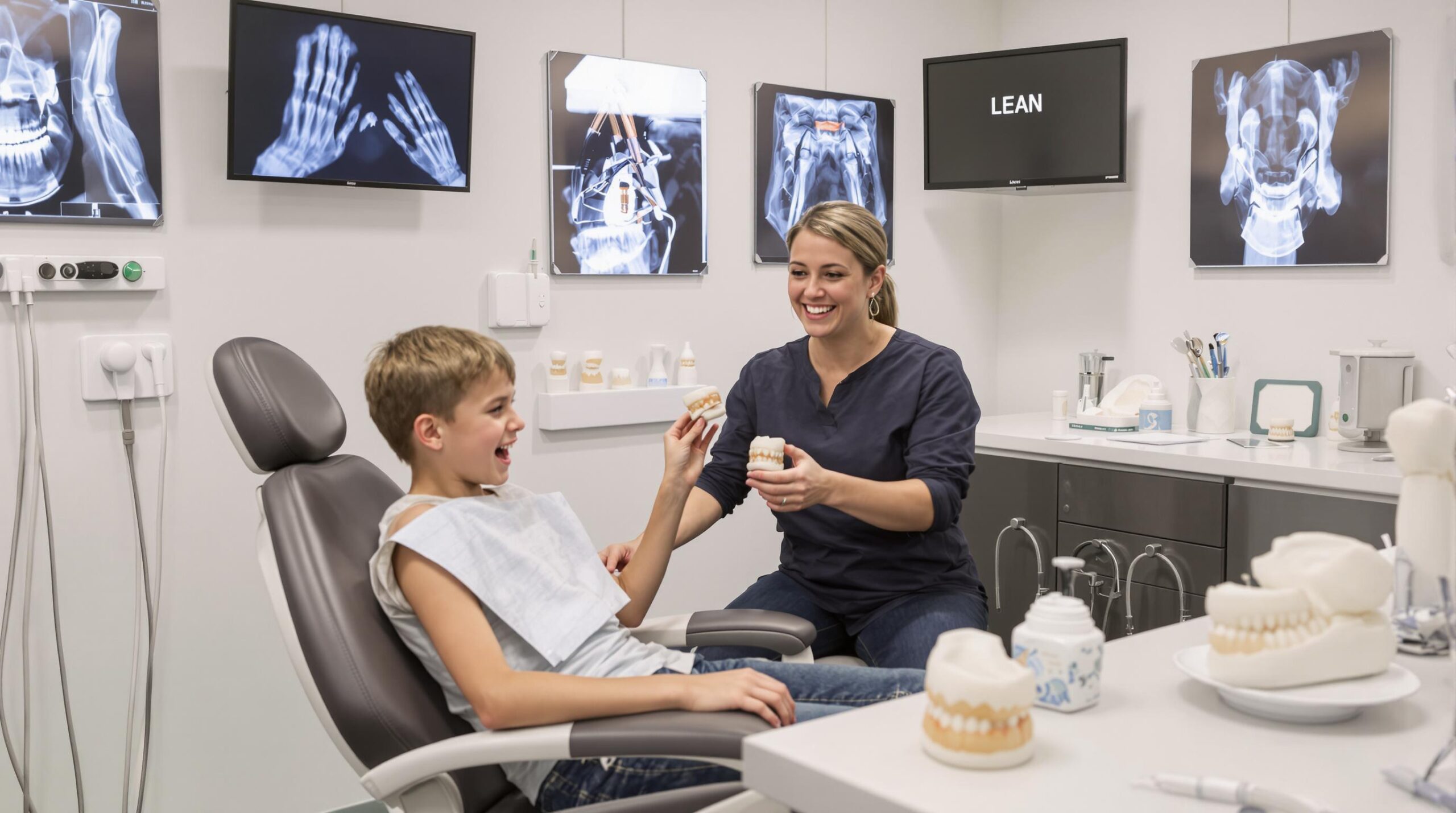The phenomenon of unerupted maxillary central incisors is not merely a dental inconvenience; it poses significant challenges to both the aesthetic profile and emotional well-being of affected individuals. This clinical dilemma is often triggered by a myriad of factors, with supernumerary teeth, specifically the tuberculate variety, frequently obstructing the eruption pathway of permanent incisors. Additional contributing elements include trauma, congenital absence, or issues like dilaceration, where the tooth root becomes curved. Other obstructions such as odontomes and systemic conditions like cleidocranial dysplasia, or medications causing gingival overgrowth, further complicate the eruption process. Understanding these causes is vital as they directly influence treatment approaches, crucial for restoring a patient’s smile and confidence.
Key Facts
- Supernumerary teeth, trauma, and systemic conditions are primary causes of unerupted maxillary central incisors.
- Early detection through diagnostic protocols like radiographic imaging aids in timely intervention.
- Effective management requires a combination of orthodontic and surgical strategies.

Causes and Clinical Implications of Unerupted Maxillary Central Incisors
The failure of eruption of maxillary central incisors is more than a simple dental issue; it significantly impacts both the cosmetic appearance and the psychological well-being of individuals. This clinical problem can stem from a variety of causes. One of the most common reasons is the presence of supernumerary teeth, particularly the tuberculate type, which often form later and obstruct the eruption path of permanent incisors. Beyond the issue of extra teeth, other factors can lead to impaction, such as trauma to the growing teeth, congenital absence, or a condition known as dilaceration where the root of the tooth becomes bent. Moreover, odontomes—or masses of disorganized dental tissue—can block the normal eruption process, and systemic conditions like cleidocranial dysplasia or medications that induce gingival overgrowth further complicate the situation. Understanding these root causes is crucial as they directly inform the treatment choices aimed at restoring not only a patient’s smile but also their confidence.
Critical Timelines and Diagnostic Protocols for Eruption Delays
The normal eruption process for maxillary central incisors usually begins between the ages of 6-7 years. However, variations are not uncommon and can occur due to factors such as gender, ethnicity, or any underlying endocrine abnormalities. These variations make it crucial to monitor the eruption timeline vigilantly. A delay exceeding six months between the eruption of one incisor and its antimere, or deviations from the typical eruption sequence, warrants immediate clinical evaluation. Radiographic imaging becomes a vital tool in these scenarios, helping clinicians identify potential impactions or misalignments before they exacerbate. This underscores the importance of routine dental checks, particularly during the mixed dentition phase when both primary and permanent teeth are present. Such evaluations help in early detection of abnormalities that could lead to more complex issues if left unaddressed.
Orthodontic and Surgical Management Strategies
When faced with unerupted maxillary incisors, the management plan involves a careful diagnostic process followed by strategic orthodontic and, if necessary, surgical interventions. Typically, the removal of obstructive supernumerary teeth can pave the way for natural tooth eruption. However, in cases where impaction is severe, surgical intervention might be necessary to facilitate the process. Once the path is cleared, fixed orthodontic appliances play a crucial role in managing space and aligning the erupting teeth properly. Mechanical aids such as gold chains may also be employed to guide eruption strategically. This multi-disciplinary approach highlights the importance of cooperation between orthodontists and surgeons to achieve optimal outcomes. Early detection and prompt management are key to addressing the clinical and psychological impacts associated with unerupted incisors, ensuring patients receive the comprehensive care required for maintaining both oral health and self-esteem.
Comprehensive Approaches for Optimal Patient Care
Successfully addressing the issue of unerupted maxillary central incisors requires an in-depth understanding of its causes and timely diagnostic protocols. The integration of orthodontic and surgical strategies proves crucial in creating effective treatment plans. Early removal of supernumerary teeth and strategic use of mechanical aids like gold chains ensure the proper alignment of erupting teeth. This coordinated effort among dental professionals not only facilitates physical restoration but also aids in bolstering the psychological and emotional health of patients, ultimately enhancing both their oral health and overall self-esteem.
References: Padhraig S Fleming, Paul Scott, Andrew T DiBiase. Central Problems: Orthodontic Management of Unerupted Maxillary Central Incisors. Orthodontic Update. September 2008.

